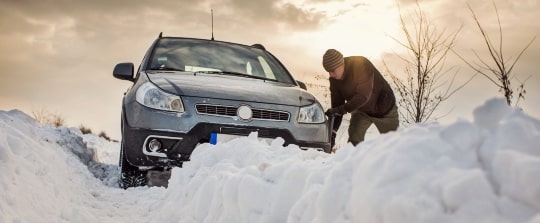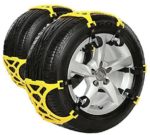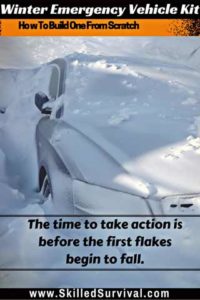
Winter can quickly turn your car from a reliable vehicle to a cold, stuck death trap.
Whether you’re navigating icy city streets or remote mountain roads, being unprepared can leave you stranded.
Are you really ready for the icy conditions, or are you relying on luck? Don’t leave it to chance—build your winter car survival kit now, before the next blizzard hits.
Gear To Get You Un-stuck
Getting unstuck is the best way to avoid spending a night (or longer) stranded. So it’s worth having a few tools in your vehicle to get you going again. The preventative equipment required for self-rescue consists of:
- Ways to remove snow
- Traction devices to get a grip on icy and snowy surfaces
1. Snow Shovel

A shovel will keep your vehicle from being entirely buried under a snowdrift. Because a buried vehicle is nearly impossible for a rescue team to spot.
Or if worst came to worst, you could use a survival shovel to build a snow shelter.
↓ Lifeline Aluminum Shovel
2. Windshield Scraper and Brush

It will also make visibility easier, keeping it out of the ditch in the first place. Having one of these is a must-have all winter long.
I’m always amazed when people are huddled in their cars waiting for the defrost to warm their windshields. Talk about unprepared!
↓ Top 6 Best Ice Scraper & Snow Brush
3. Traction Mats
Often, a little extra traction is all that’s needed to get moving again. Many people use sand or cat litter. But these items only work once, and then you’re out of luck.
A set of traction mats are reusable. And can be easily repositioned to keep you heading in the right direction.
↓ SubZero 12501 GripTrax 03
4. Tire Chains
In packed snow conditions, tire chains are an excellent way to get traction and prevent sliding. However, they’re a controversial topic… So make sure to check the local regulations regarding their use.
- Many western states require tire chains in severe conditions.
- In the Midwest, they are illegal in most jurisdictions even during the worst snows.
If you carry chains, make sure you know how to install them. Put them on first in your dry driveway and later in a snowy parking lot. It’s a lot harder to get them on tight and secure when it’s dark. And you’re fumbling cold hands will appreciate the practice if the need arises.
Side Note: Make sure you vehicle has a full spare tire, avoid relying on a donut spare. This is wise advice is for ALL seasons.
↓ Snow Chain comparison TEST
5. Small Tarp

A 5’x7′ tarp is a perfect size for a lot of roadside uses.
↓ Top 10 Best Tarps Review
6. Battery Boost Jumper
Cold weather is rough on your vehicle’s battery. And it’s easy to find yourself unable to start the engine when you need it most.
A self-contained battery jumper is a simple solution. And way better than waiting for another motorist with jumper cables to start your engine.
↓ NOCO Boost Plus Jumper Review
7. LED Tactical Flashlight
All survival kits need a super bright LED EDC flashlight. If it’s dark out (or the blizzard has blocked the sun) you’ll need illumination to see what you’re doing.
Also, it’s a good idea to keep extra batteries in your winter car survival kit as well.
Want a free FireHawk Tactical Flashlight?
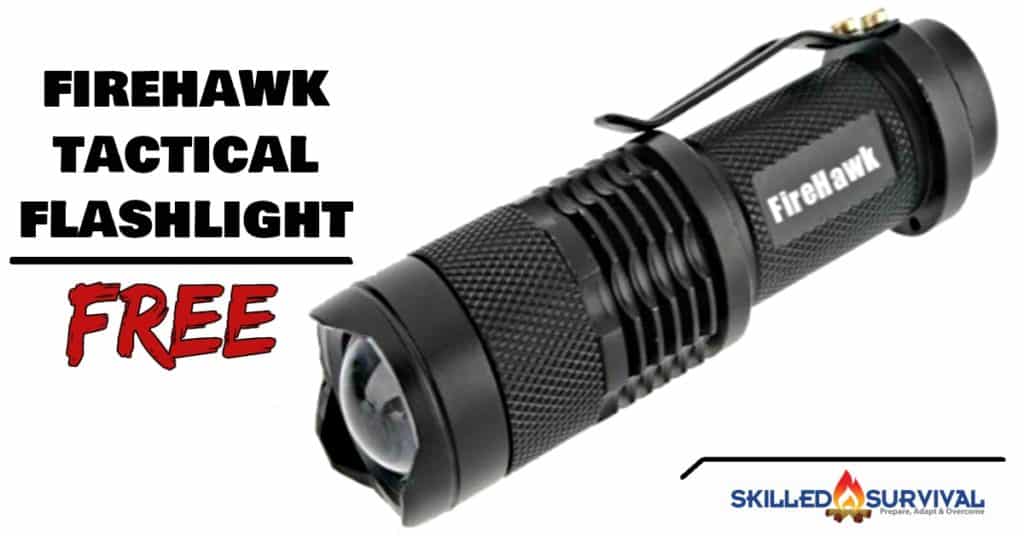 Click here now to access this limited time offer, just cover the small shipping & handling fee.
Click here now to access this limited time offer, just cover the small shipping & handling fee.
↓ Get A FREE FireHawk Tactical Flashlight (+S&H)

Gear In Case You Can’t Get Unstuck
If you have to stay out overnight, you’ll need a few more things. At this point, your focus turns from getting your vehicle out to keeping yourself and your passengers protected from the elements.
8. Water Bottle
In the winter, the colder temperatures often trick people into assuming they don’t need to drink as much water. You tend not to feel as
The truth is: You must stay hydrated to maintain proper body temperature, no matter the weather outside. Want proof? High-altitude mountaineers spend about as much time melting drinking water as they do climbing – it’s THAT important.
A stainless steel water bottle is an excellent choice. That way you can use it over a camp stove or small fire to melt and heat water.
Never eat large amounts of snow directly. Always melt the snow before ingesting. If you eat snow directly, you’re basically using your internal body temperature to melt the snow.
This can lower your core temperature and lead to hypothermia.
↓ Use these Cold Weather Water Bottle Hacks
9. LifeStraw Personal Water Filter
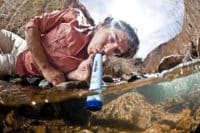
Whether it’s coming from your tap or from the snowbank where you’re stranded. The easiest way to purify water on the go is with a LifeStraw Personal Water Filter.
We put the LifeStraw to the test so you know it’s a solid device.
↓ LifeStraw Review and Field Test
Tip: If you have kids or grandkids that you drive around, make sure to get them each a LifeStraw. The last thing you need in a survival situation is kids refusing to drink from the same LifeStraw.
10. Food
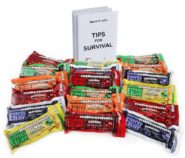
I also like the high-calorie bars since you buy them once and you’re food preparation is done. Snickers bars may taste great, but you’ll chip a tooth on the caramel trying to eat one that’s been sitting in sub-zero temps.
If you’re able to heat water over a stove or fire, consider adding powdered hot chocolate or another warm drink with lots of calories.
11. Extra Warm Clothes
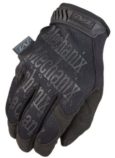
Carrying a change of clothes and some extra insulating layers will let you get out of any wet clothes and warm up. Gloves are a must. If you’re trying to do any of these survival tasks with bare hands you’re not going to be successful.
I like Mechanix brand gloves since they provide me the dexterity to perform survival tasks. Try lighting a fire with thick mittens on; not fun.
↓ Mechanix Gloves – What You Need To Know
12. All-Weather Reflective Blanket
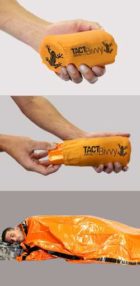
These blankets are made with a heat-reflective internal layer to trap the body heat you’re generating. Keeping you warmer, and longer.
Also, consider how many people you’ll be traveling with. And be sure that you can keep everyone warm.
↓ Survival Frog TACT Bivvy Review
13. Paracord (FireCord)

It’s designed with 7 strands of paracord and 1 strand of Fire Cord you can use as fire tinder.
↓ 550 FireCord | Live Fire Gear
14. Waterproof Matches and Tesla Coil Lighter
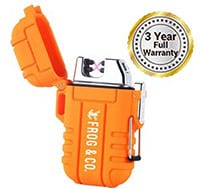
A fire will allow you to keep warm, melt snow into water, and signal searchers.
↓ Frog & Co. Tough Tesla Lighter Review
15. Camp Stove
Your matches and lighter won’t be worth 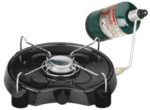
So a fire starter makes a wise addition. In wetter climates finding anything dry enough to burn is always a challenge. So adding a small portable camp stove is a better option.
↓ Coleman Power Pack Single Burner Stove Review
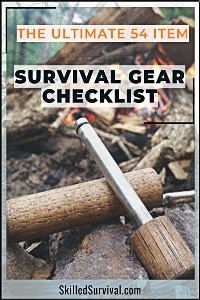
Want a free 54 item survival gear checklist?
Enter your email below to instantly download this Complete Checklist PDF. No purchase necessary. 👇 👇16. Extra Fuel Bottle
Obviously, extra fuel can be handy if you’re relying on your vehicle for shelter. Running the engine for heat will keep you warm, but it will also slowly drain your gas tank.
Carrying a couple of extra liters of fuel in a sturdy container will give you a bit of a buffer.
17. Hand Crank Radio / Cell Phone Charger
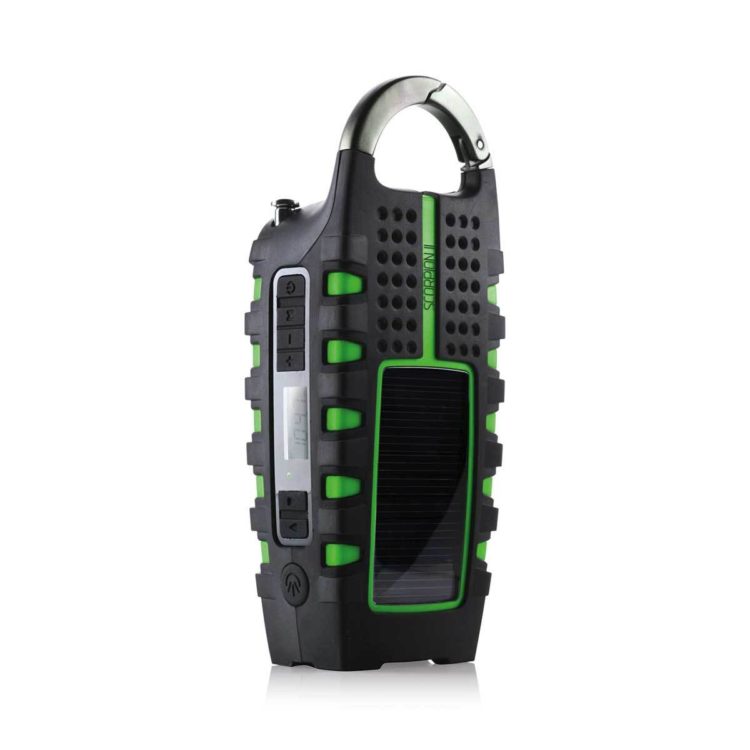
Icy roads, winter storms, freezing rain, and other winter weather patterns are common reasons to pull over and wait until it’s safe to start traveling again.
Typically, you won’t want to continually run your vehicle while you’re waiting… Which means you won’t be able to listen to the radio without risking draining the battery.
It’s always important to keep your “ear to the ground”, as they say, to stay updated on the weather. So add a hand crank radio in your winter car survival kit.
It’s a dependable connection to the outside world. Keeping you informed on the weather and whatever else is going on.
18. Survival Playing Cards
Keeping your mind occupied can help make any survival situation more tolerable. Your first priority will be that you, and your loved ones, will live to see another day.
Once you have the situation under control and you’re monitoring the airwaves with your pocket radio, there’s nothing wrong with breaking out a deck of survival playing cards.
These survival playing cards serves more than one purpose. They are, of course, a standard deck of playing cards but they are also an educational tool.
Why? Because each of the 52 cards has a survival or emergency situation described on it and tips on “how to survive it”.
19. Road Flares
Being able to notify others of danger up ahead is very important!
Whether it’s to let them know you’re stuck in the middle of the road or that there’s another dangerous hazard. Road flares should be in EVERYONE’s vehicle emergency kit – no excuses. They save lives!
20. Propane Heater
I use a small but powerful propane heater to extend my camping season into late fall. But why just store it in your vehicle?
That way, if you’re ever stuck overnight freezing cold blizzard, you can stay warm. Just note, you can suffocate if you don’t have proper ventilation.
Go here to learn more about tent heaters.
21. First Aid Kit
Of course, no winter emergency car kit would be complete without some first aid supplies.
IFAK first aid kits have what you need to treat basic medical emergencies. Buy one and add it to your stash of supplies.
22. Winter Travel Kit Bag / Tote
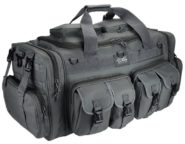
It doesn’t necessarily need a lot of pockets… But make sure you have a way to separate your spare gas can and your camp fuel from the rest of the gear.
Winter Emergency Car Kit Action Plan
This action plan can be summed up in just two words: Do. It.
- Invest in the gear and supplies listed in this article.
- Then put them in a duffel bag and put this bag full of gear items in your trunk.
You have zero excuses not to do this. If you drive in winter conditions at all, it’s your responsibility to invest in a few essential tools and supplies.
This responsibility goes double for anyone who drives others around. That means parents of young children and those who take care of the handicapped or elderly. The time to take meaningful action is NOW before the first flakes begin to fall.

Prepare, Adapt & Overcome,
P.s. - I just found out 2 out of 3 Americans don’t feel prepared for a 3 day disaster!!!
I guess this goes to show how modern society continues to embrace ‘living a fragile life.’ What’s crazy is… it’s so easy to fix.
To make sure YOU have the basics, watch our FREE training on “10 Simple Steps To Basic Preparedness” that shows you HOW.
Nothing crazy here… this isn’t doomsday prepping... just the basics every responsible adult should have before a disaster strikes.Why You Can Trust Skilled Survival...
Go here now to review a full breakdown of:
- Who We Are
- Our Credentials
- Our Mission
- & Product Recommendations...
Here are a few highlights of our teams credentials & certifications:
- Certified Member of a Mountain Search & Rescue Organization
- Plant Emergency & Safety Leader for a Major Food Manufacturer
- Member of the 10TH Mountain Division Hut Association
- Certifications: Avalanche 1, WFR, CPR
- Official Gear Tester for Numerous Outdoor Gear Companies
- Countless Multiday Backpacking trips into Remote Wilderness
- Bachelor's Degree In Mechanical Engineering
- Bachelor's Degree In Civil Engineering
- Bachelor's Degree In Biomedical Engineering
"It takes 20 years to build a reputation and five minutes to ruin it." - Warren Buffett
We're fully aware that trust is NOT something you GET but is EARNED.
And we'll continue to earn YOUR trust through our forthright and honest approach with each new Blog Post, Guide & Product we create...
P.s - I just took this FREE 60-second 'Readiness Score Quiz'👇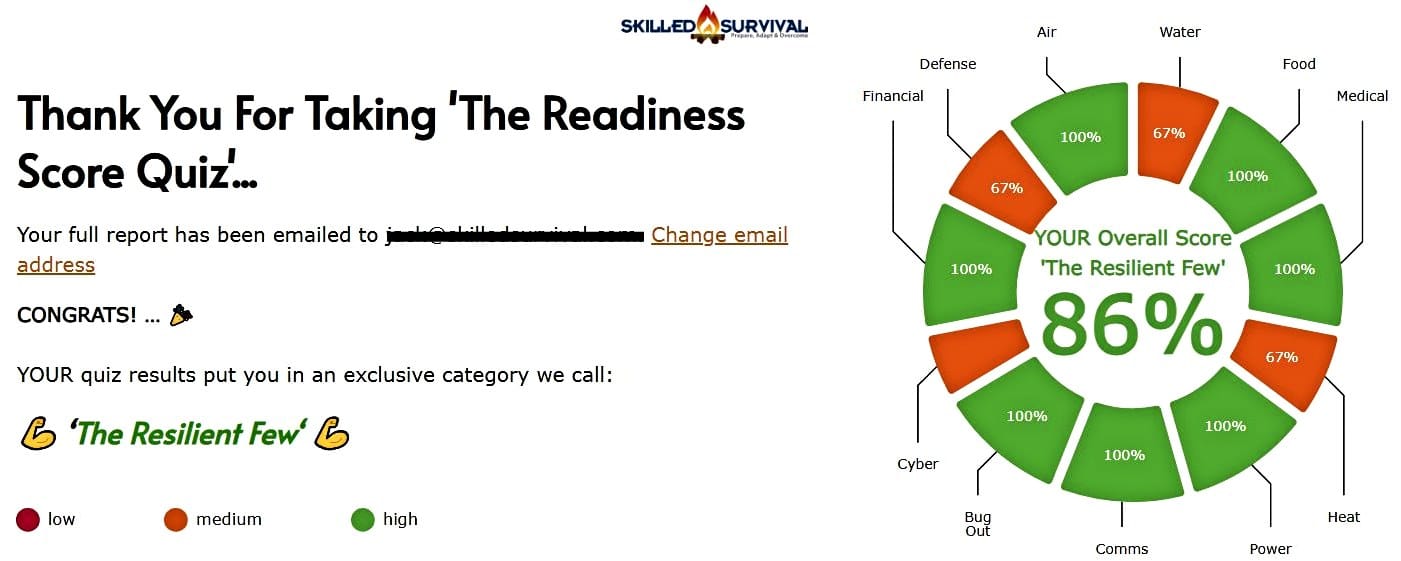
AND... I've still got a few gaps in my preps...🤔 But at least, I'm not part of 'The Fragile Masses'. 👍 Find out where YOU stand by answering a few questions...
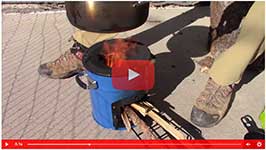
Recommended Reading
LifeStraw Review: An Expert Puts It To The Ultimate Test
LifeStraw Review - with no moving parts, chemical additions, or batteries, it provides a lightweight, compact filter to treat up to 4000L...
Best Survival Bow: 16 Surprising Reasons YOU Should Get One
A survival bow is one of the most underappreciated weapons I think EVERYONE should own. Here are 16 reasons why YOU should get one today.
Best Survival Hatchets: Tough Enough To Outlast The Wild
Not all hatchets are created equal. A quality survival hatchet can do tasks even a survival knife cannot. Here's the one I carry in my pack.
Best Survival Radios: Why You Must Secure One (before SHTF)
Be the ONE who knows what the hell is going on after SHTF. Here's how to set yourself up with a reliable survival radio in a future disaster.
Best EDC Flashlight: Simple, Small, Compact & Super Bright
The best edc flashlight is durable, bright, compact and worth carrying! In this guide, we review the best one to make your search easy.
11 Proven DIY Survival Gear Projects ANYONE Can Follow
Building DIY survival gear doesn't NEED to be complicated to be effective. Here are the 11 best projects you can finish in just a few hours.

